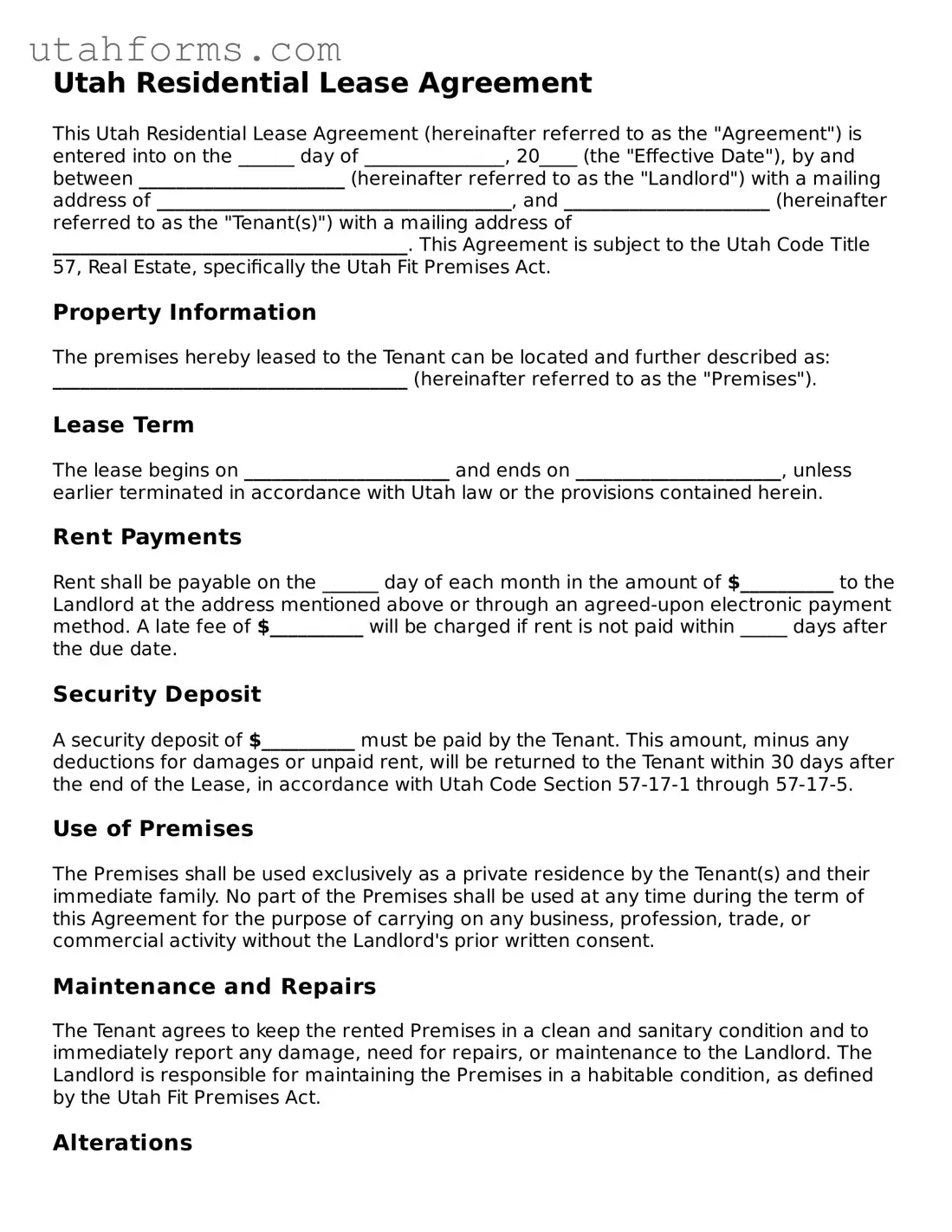Utah Residential Lease Agreement
This Utah Residential Lease Agreement (hereinafter referred to as the "Agreement") is entered into on the ______ day of _______________, 20____ (the "Effective Date"), by and between ______________________ (hereinafter referred to as the "Landlord") with a mailing address of ______________________________________, and ______________________ (hereinafter referred to as the "Tenant(s)") with a mailing address of ______________________________________. This Agreement is subject to the Utah Code Title 57, Real Estate, specifically the Utah Fit Premises Act.
Property Information
The premises hereby leased to the Tenant can be located and further described as: ______________________________________ (hereinafter referred to as the "Premises").
Lease Term
The lease begins on ______________________ and ends on ______________________, unless earlier terminated in accordance with Utah law or the provisions contained herein.
Rent Payments
Rent shall be payable on the ______ day of each month in the amount of $__________ to the Landlord at the address mentioned above or through an agreed-upon electronic payment method. A late fee of $__________ will be charged if rent is not paid within _____ days after the due date.
Security Deposit
A security deposit of $__________ must be paid by the Tenant. This amount, minus any deductions for damages or unpaid rent, will be returned to the Tenant within 30 days after the end of the Lease, in accordance with Utah Code Section 57-17-1 through 57-17-5.
Use of Premises
The Premises shall be used exclusively as a private residence by the Tenant(s) and their immediate family. No part of the Premises shall be used at any time during the term of this Agreement for the purpose of carrying on any business, profession, trade, or commercial activity without the Landlord's prior written consent.
Maintenance and Repairs
The Tenant agrees to keep the rented Premises in a clean and sanitary condition and to immediately report any damage, need for repairs, or maintenance to the Landlord. The Landlord is responsible for maintaining the Premises in a habitable condition, as defined by the Utah Fit Premises Act.
Alterations
No alterations, additions, or improvements shall be made by the Tenant without the prior written consent of the Landlord.
Subletting
Subletting of the Premises, or any part thereof, without the prior written consent of the Landlord is strictly prohibited.
Pets
Pets are ☐ allowed ☐ not allowed on the Premises. If allowed, a non-refundable pet fee of $__________ will be required.
Termination and Renewal
Upon expiration of the lease term, this Agreement may be renewed or terminated according to the terms agreed upon by both parties or as allowed under Utah law.
Governing Law
This Agreement shall be governed, construed, and interpreted by, through, and under the Laws of the State of Utah.
Signatures
IN WITNESS WHEREOF, the Parties hereto have executed this Utah Residential Lease Agreement as of the date first above written.
Landlord Signature: ___________________________ Date: _________
Tenant Signature(s): ___________________________ Date: _________
